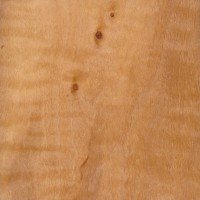European Alder grows in wet places. This tree is known as the Alnus glutinosa scientific name. It is a tree that grows under favourable Conditions to a height of 20 to 30 metres (66 to 98 ft) and exceptionally up to 37 metres (121 ft). Young trees have an upright habit of growth with a main axial stem but older trees develop an arched crown with crooked branches. One of the main advantages of this tree is that it can grows in low-quality soils. this tree has been distributed in Western Europe and northern Africa. European Alder Wood is rated non-durable to perishable regarding decay resistance, and freshly cut logs should be quickly converted into lumber and dried to prevent staining or decay in the wood.
European Alder, Black Alder, Common Alder
Alnus glutinosa
European Alder groes in Western Europe.
65-80 ft (20-25 m) tall, 1-2 ft (.3-.6 m) trunk diameter
31 lbs/ft3 (495 kg/m3)
38, .50
650 lbf (2,890 N)
11,000 lbf/in2 (75.9 MPa)
1,303,000 lbf/in2 (8.99 MPa)
6,130 lbf/in2 (42.2 MPa)
Radial: 5.0%, Tangential: 9.0%, Volumetric: 14.0%, T/R Ratio: 1.8
European Alder tends to be a light tan to reddish brown; color darkens and reddens with age.
European Alder has closed pores, and a fine, even grain. The grain is usually straight, but can also be wild or irregular depending on the growth form of each individual tree.
European Alder is rated non-durable to perishable regarding decay resistance, and freshly cut logs should be quickly converted into lumber and dried to prevent staining or decay in the wood.
European Alder is very easy to work with both hand and machine tools; it sands especially easy. The wood is rather soft, however, and care must be taken to avoid denting it in some applications. European Alder has excellent gluing, staining, and finishing properties; it also turns well and behaves similar to Black Cherry.
No characteristic odor.
Although severe reactions are quite uncommon, Alder in the Alnus genus has been reported to cause eye, skin, and respiratory irritation.
European Alder is not commonly available as lumber. Board widths are likely to be narrow as a result of the small diameter of the tree itself. When available, the price should most likely be moderate.
This wood species is not listed in the CITES Appendices, and is reported by the IUCN as being a species of least concern.
Veneer, plywood, charcoal for gunpowder, clogs, piles/supports, and turned items.
Although the tree has a wide distribution throughout Europe, and is commonly found near wet areas such as ponds and marshes, Alder has not been used very commonly for lumber or woodworking purposes.
One historical use where the timber has been employed comes from an unlikely source: for despite its poor durability above ground, (where it quickly rots and decays), Alder is quite durable underwater, and has been used for piles and supports: most notably throughout the city of Venice, Italy.
Information used with permission The Wood Database

